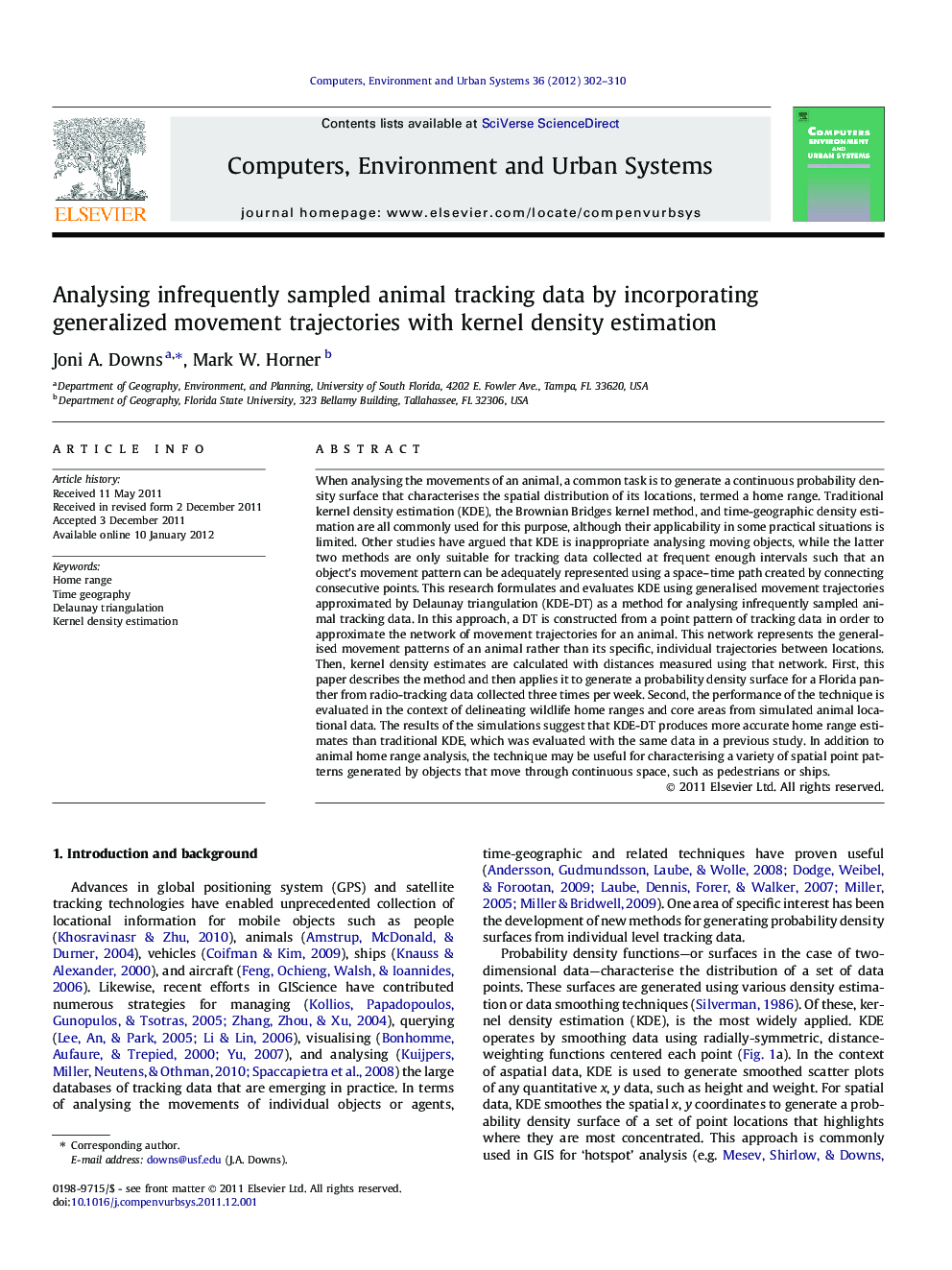| Article ID | Journal | Published Year | Pages | File Type |
|---|---|---|---|---|
| 506397 | Computers, Environment and Urban Systems | 2012 | 9 Pages |
When analysing the movements of an animal, a common task is to generate a continuous probability density surface that characterises the spatial distribution of its locations, termed a home range. Traditional kernel density estimation (KDE), the Brownian Bridges kernel method, and time-geographic density estimation are all commonly used for this purpose, although their applicability in some practical situations is limited. Other studies have argued that KDE is inappropriate analysing moving objects, while the latter two methods are only suitable for tracking data collected at frequent enough intervals such that an object’s movement pattern can be adequately represented using a space–time path created by connecting consecutive points. This research formulates and evaluates KDE using generalised movement trajectories approximated by Delaunay triangulation (KDE-DT) as a method for analysing infrequently sampled animal tracking data. In this approach, a DT is constructed from a point pattern of tracking data in order to approximate the network of movement trajectories for an animal. This network represents the generalised movement patterns of an animal rather than its specific, individual trajectories between locations. Then, kernel density estimates are calculated with distances measured using that network. First, this paper describes the method and then applies it to generate a probability density surface for a Florida panther from radio-tracking data collected three times per week. Second, the performance of the technique is evaluated in the context of delineating wildlife home ranges and core areas from simulated animal locational data. The results of the simulations suggest that KDE-DT produces more accurate home range estimates than traditional KDE, which was evaluated with the same data in a previous study. In addition to animal home range analysis, the technique may be useful for characterising a variety of spatial point patterns generated by objects that move through continuous space, such as pedestrians or ships.
► KDE-DT is used to analyse infrequently sampled animal tracking data. ► KDE-DT produces a continuous probability density surface of an animal’s movement. ► KDE-DT is evaluated in the context of delineating animal home ranges. ► The results suggest KDE-DT produces more accurate home ranges than traditional KDE.
